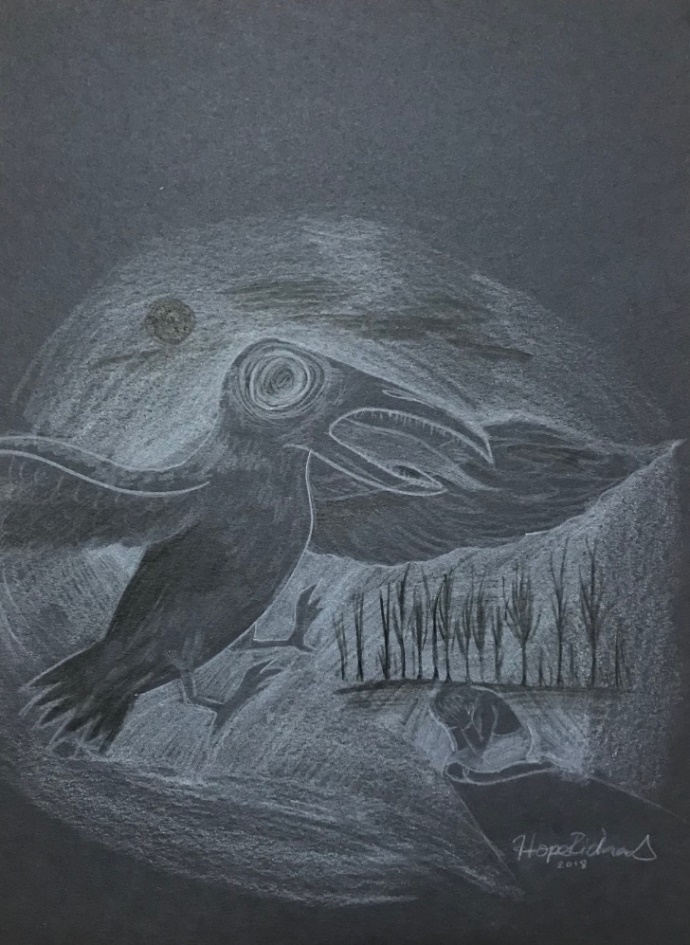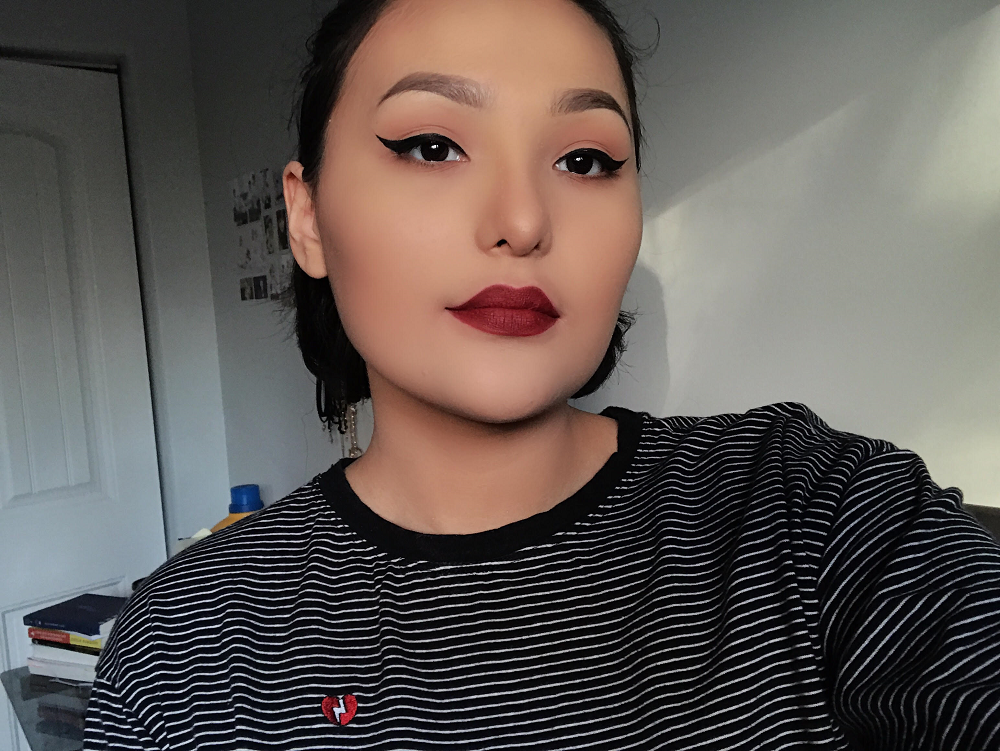Article 4 – The Death Bird
by Hope Richards
My name is Hope Richards, and I am an eighteen-year-old Cree woman from a small reserve called Opaskwayak Cree Nation in northern Manitoba. Growing up, I was always interested in all kinds of art. Drawing Indigenous art is not something I normally do, mostly because there are so many amazing Indigenous artists and my art is rather mediocre, if that. To be able to draw for a school grade is something that I will always jump for because I love to do it, and I had the option of choosing poems that held meaning for me rather than being assigned them. I gained confidence and decided that I can do something with my art, especially with the help of my instructors, who are all for allowing Indigenous voices to be heard.
Death Bird by George Kenny

I remember a t-shirt clinging hot dawn
when the mosquitoes had somehow infiltrated past the screens my father had set up, and
looking out the window, toward the pink
sneaking approach of another day in August,
hearing the trembling cries of the
death bird (an Ojibway belief was that
anyone hearing the death-bird
and not ending its life
would have a near relative die),
and I hear the raging of my mother’s voice:
“why didn’t you fix those screens?” The storm
gathering in her, she whirled like a dragonfly,
slashing as tormenting insects
(She didn’t hear the death-bird
or she would have shoved the
12-gauge into my father’s hands
and kicked him out the door,
not caring. Anyone who tried
to kill the death-bird and failed
to do so, would himself die).
I remember being too scared of my mother’s anger to tell anyone. I heard the death-bird on that t-shirt-clinging hot August dawn,
and I wish for a second chance.
For barely four months later,
mother rode off with the
death-bird (1-26).
Author’s Notes: The lack of color in this illustration was to portray the theme of this poem: death. Typically, death is a dark and grim topic. As I read this particular poem, I immediately thought of the death bird being a large and crazy looking bird, with all the more ability to scare its victims when it takes them to their ends. I didn’t want to use color for such a topic where peoples’ lives are being taken, the color being taken by the bird.
Work Cited
Kenny, George. “Death Bird.” Native Poetry in Canada: A Contemporary Anthology, edited by Jeanette C. Armstrong
and Lally Grauer, Broadview Press, 2001, pp 196-197.
About the Artist: Hope Richards is an eighteen-year-old Cree woman from a small reserve called Opaskwayak Cree Nation in northern Manitoba. While growing up on the Reserve, she is always interested in all kinds of art. Drawing Indigenous art is not something she normally does, because she thinks that her works are mediocre. But she was inspired by George Kenny’s “Death Bird,” and here is the art she created out of the poem.

Instructor’s Remarks: Hope Richards was at my Contemporary Canadian Literature 2—Poetry and Drama in spring 2018. She has passion for pencil drawings. She identifies herself with the emotions expressed in some of the poems to be covered for this course. For the creative project, she finds her own way to express her understanding of the poems as well as her own emotions through reading those poems – Dr. Ying Kong
